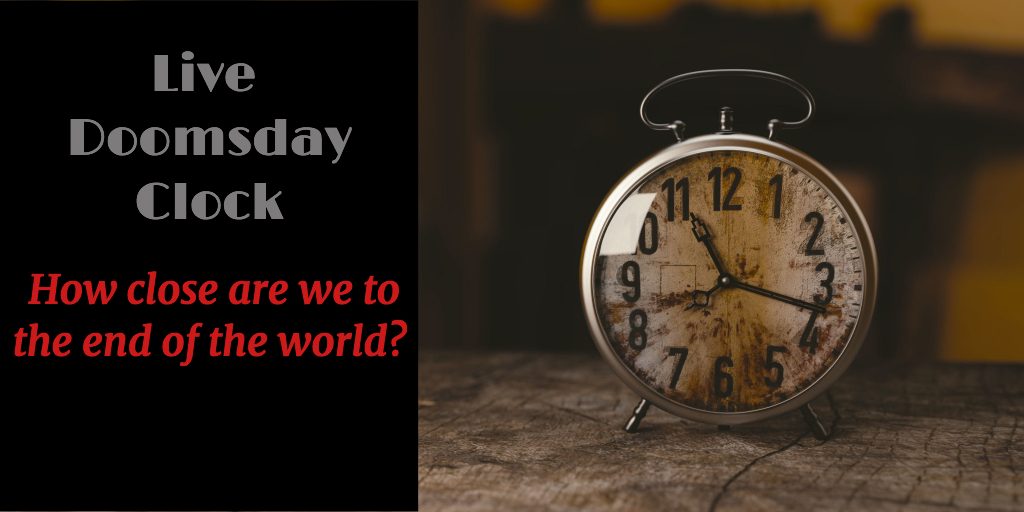Want to know how close we are to the end of the world? Well, we may not actually know that, but the Doomsday Clock is certainly going to try. On Thursday morning, January 25, at 10 a.m. Eastern (9 p.m. Central or 3 p.m. in the UK), the Doomsday Clock is going to give an all new prediction for just how close our world is to midnight. Now, we think we have this set up so you can watch it live in the video below. But if the video below doesn’t work for any reason, just watch live by going here to the Bulletin of Atomic Scientists’ live stream page, or their Facebook page.
The clock is one method of trying to determine just how close we are to the end of the world. The Bulletin of Atomic Scientists moves the clock forward or backward depending on what’s going on in the world at the time. In an FAQ, they explain: “The Doomsday Clock is a design that warns the public about how close we are to destroying our world with dangerous technologies of our own making… After the Soviet Union successfully tested its first atomic bomb in 1949, Rabinowitch reset the clock from seven minutes to midnight to three minutes to midnight.”
Before the January 25 live stream, the clock was at two-and-a-half minutes until midnight. That’s the lowest it’s been since the 1950s and 1960s. (Back in 1991, the clock was 17 minutes to midnight after the end of the Cold War.) Do you think the clock will move forward or back? Some people are guessing that it will go forward, since none of the threats last year that caused it to move forward have receded yet. But the closest the clock has ever been to midnight was in 1953, when it was moved to two minutes after the U.S. and Soviet Union each tested their first thermonuclear weapons.
The speakers for the big announcement include Rachel Bronson, President and CEO, Bulletin of the Atomic Scientists; Sivan Kartha, Senior Scientist at the Stockholm Environmental Institute and co-leader of SEI’s Gender and Social Equity Program; Lawrence Krauss, director, Origins Project at Arizona State University; Robert Rosner, William E. Wrather Distinguished Service Professor in the Department of Astronomy & Astrophysics and Physics at the University of Chicago; and Sharon Squassoni, Research Professor of Practice at the Institute for International Science and Technology Policy, The George Washington University.
Here’s a YouTube video explaining the clock:
By the way, if you’re worried about nuclear war, Post Apocalyptic Media suggests the book Nuclear War Survival Skills. You can get it on Amazon here. It’s a new edition of Cresson H. Kearny’s book originally published in 1979, updated by Kearny himself in 2001. It comprises years of scientific research conducted by Oak Ridge National Laboratory.
Like what you read? Join our email list to stay updated by clicking here and be sure to follow us on Twitter.

